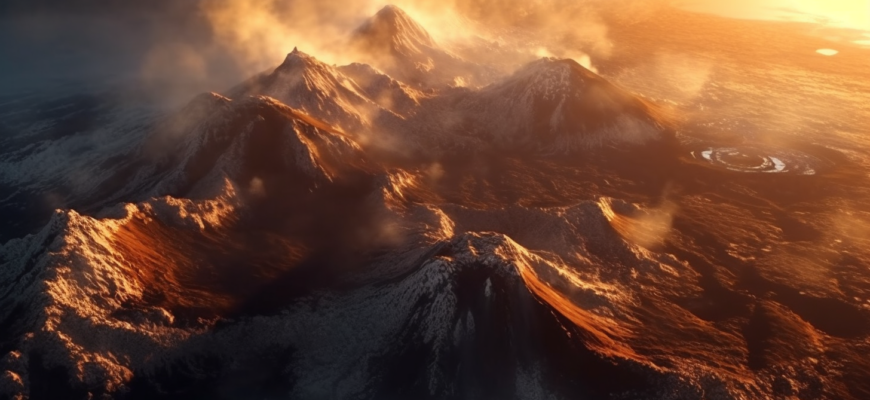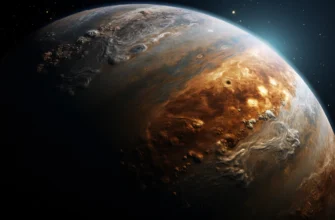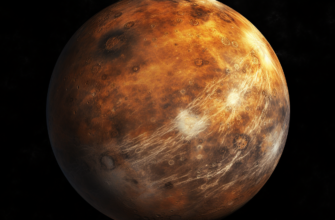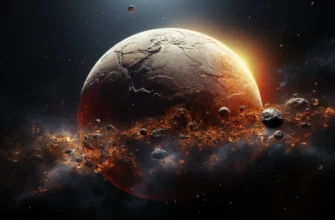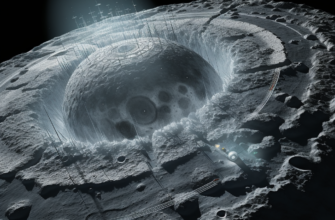- Volcanoes of Venus: An Overview
- The Largest Volcano on Venus: A Deep Dive
- The Majesty of Maat Mons
- Varieties of the Volcanoes of Venus
- The impact Volcanoes of Venus on Atmosphere
- Different Types of Volcanoes on Venus
- Spotlight on Venus: Maat Mons and Its Volcanic Neighbors
- Wrapping Up: Insights & References
- FAQs :
Volcanoes of Venus: An Overview
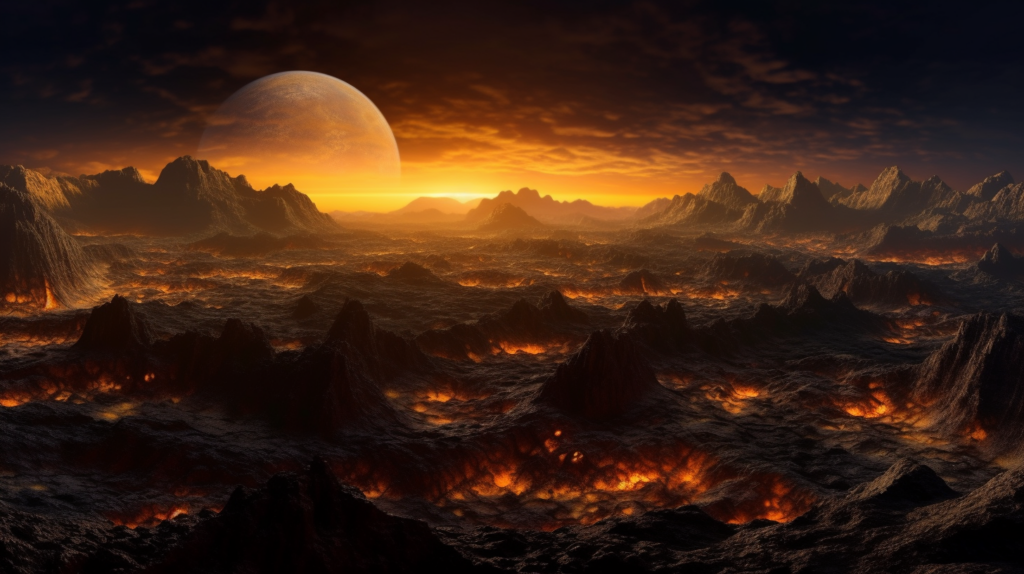
Venus, dubbed Earth’s twin, is shrouded in enigmas, especially its dominant volcanic features. The Volcanoes of Venus are a testament to the planet’s intense volcanic activity, with more Volcanoes of Venus than any other celestial body in our Solar System. This volcanic landscape, comprising 65% volcanic plains and a 90% basaltic surface, underscores the pivotal role of volcanism in sculpting Venus.
The Largest Volcano on Venus: A Deep Dive
The Majesty of Maat Mons
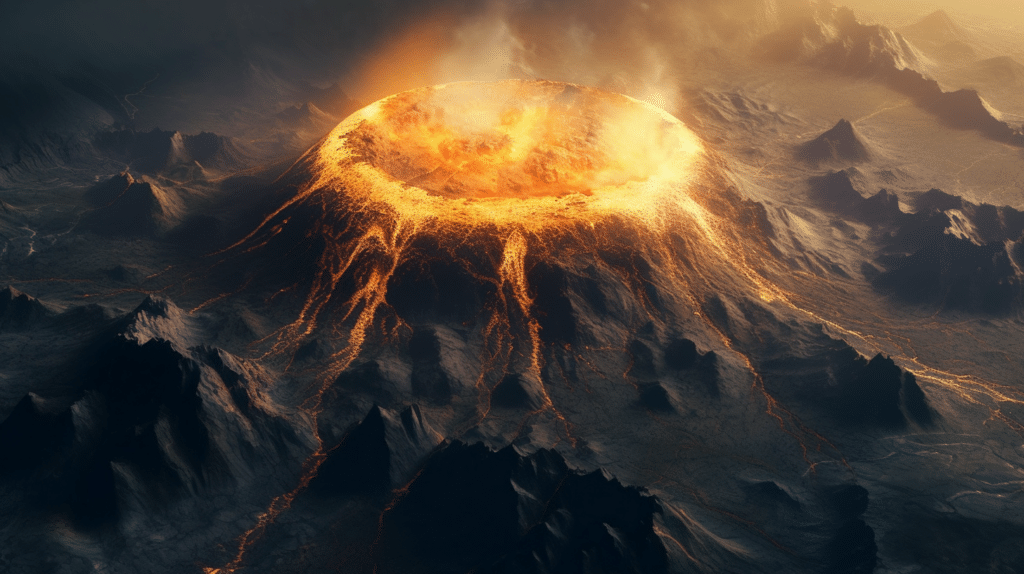
Maat Mons stands as the second highest mountain and the highest volcano on Venus. This 8-km-high volcano is a testament to the planet’s volcanic prowess. Recent radar images have revealed ash flows near its summit and on its northern flank, suggesting recent volcanic activity. However, while there are indications of its recent activity, present-day eruptions at Maat Mons have not been confirmed.
- Location and Size Situated prominently on Venus’s surface, Maat Mons has been a subject of study for many researchers. Its vast size and unique features make it a focal point for understanding Venusian volcanism.
- Historical Eruptions and Observations Historical data suggests that Maat Mons has had periodic eruptions that have shaped its structure and the surrounding landscape. Recent studies in 2023 have even indicated changes in its topography over an 8-month interval, pointing to active volcanism as the cause.
Varieties of the Volcanoes of Venus
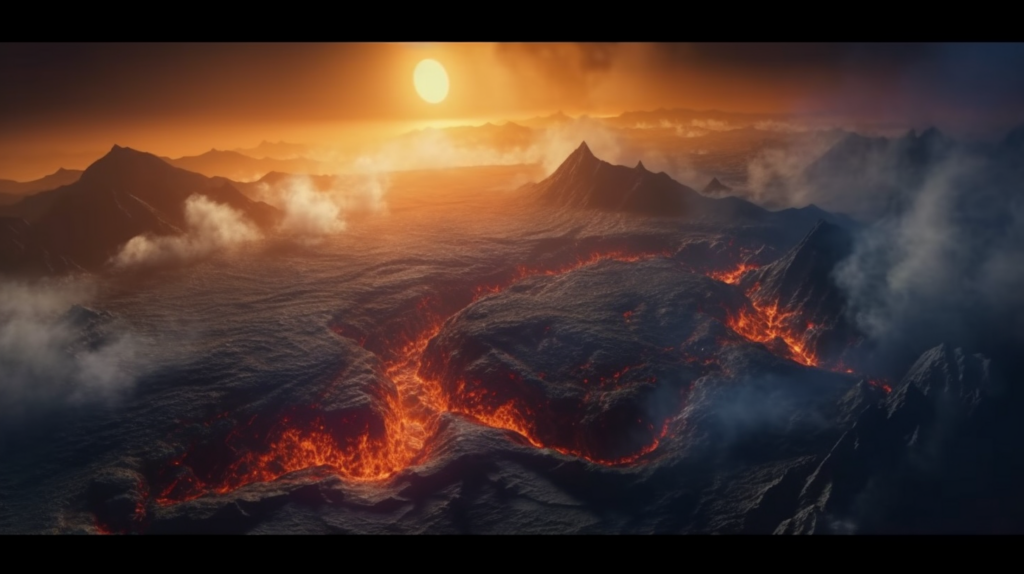
Venus, often admired for its stunning appearance, holds another remarkable feature within its fiery core – its intense volcanic activity. The planet’s surface unveils a captivating narrative of eruptive phenomena and flowing streams of molten lava, making Venus a unique celestial body in our solar system. Through meticulous radar mapping, scientists have identified an astounding number of over 80,000 volcanoes scattered across the Venusian terrain.
Unlike other planets like Earth with comparatively few detectable volcanoes, Venus showcases a multitude of these geological wonders. Strikingly, the scarcity of impact craters hints at relatively recent resurfacing activities on Venus’s volcanic landscape. It is believed that the planet’s continuous volcanic flows have effectively erased most evidence of previous impacts.
These immense numbers and diverse array of volcanoes offer an intriguing glimpse into Venus’s turbulent past and present. Scientists are still unraveling the mysteries surrounding these restless giants to understand their origins and behavior thoroughly. Despite being considerably similar to Earth in size and composition, Venus manifests an unrivaled intensity when it comes to volcanic activity.
The study of Volcanology on Venus aims not only to comprehend the complex processes occurring beneath its surface but also provide valuable insights into planetary evolution as a whole. These eruptions offer potential windows into understanding how celestial bodies undergo transformations over time. Given their large numbers and varied morphology, studying this vast collection of Venus’ volcanism allows researchers to uncover invaluable information about the geological dynamics shaping our neighboring planets.
The impact Volcanoes of Venus on Atmosphere
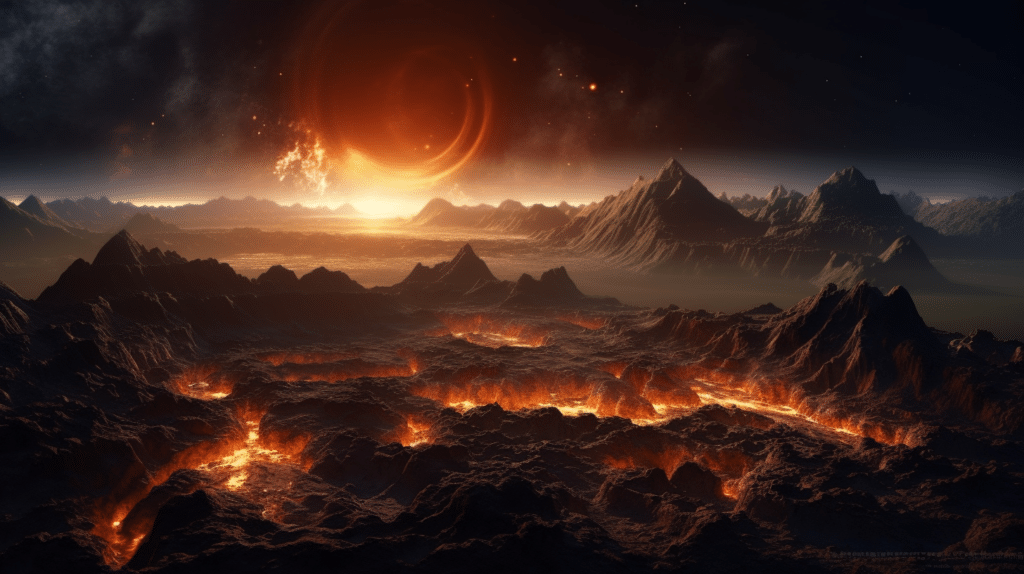
Volcanoes on Venus release vast amounts of gases, significantly impacting the planet’s thick atmosphere.
- Emission of Gases Volcanoes play a crucial role in the emission of gases on Venus. The planet’s atmosphere, rich in carbon dioxide and with a density 90 times that of Earth’s, owes much of its composition to the volcanic eruptions that release vast amounts of gases.
- Impact on Surface Temperature The continuous volcanic activity and the subsequent release of gases have led to a surface temperature hot enough to melt lead. This extreme heat is a direct result of the greenhouse gases trapped in the atmosphere.
Different Types of Volcanoes on Venus
Venus boasts a diverse range of volcanic structures. From vast shield volcanoes to intricate lava domes, the planet’s surface is a testament to its dynamic geological history.
- Shield Volcanoes These are broad, domed volcanoes with sloping sides. They are primarily formed by the eruption of low-viscosity lava. On Venus, these are the most common type of volcano.
- Composite Volcanoes Also known as stratovolcanoes, these are large, steep-sided volcanoes resulting from explosive eruptions. While less common on Venus, they offer insights into the planet’s explosive volcanic past.
- Lava Domes Formed by slow-moving lava, these are small, bulbous mounds. They are evidence of localized volcanic activity on Venus.
The volcanic activity on Venus is incredibly intense, creating dramatic eruptions that shape the planet’s surface. The lava flows eagerly across the terrain and sculpts intricate patterns as it cools and solidifies. Scientists believe that these volcanic activities are responsible for the resurfacing of large areas on Venus over time.
Unlike Earth’s tectonic activity where plates collide or separate, Venus lacks plate tectonics and instead releases its internal heat by frequent and massive volcanic eruptions. This phenomenon contributes to the high levels of carbon dioxide in the planet’s atmosphere, resulting in a thick greenhouse effect that makes Venus inhospitable to life as we know it.
Spotlight on Venus: Maat Mons and Its Volcanic Neighbors
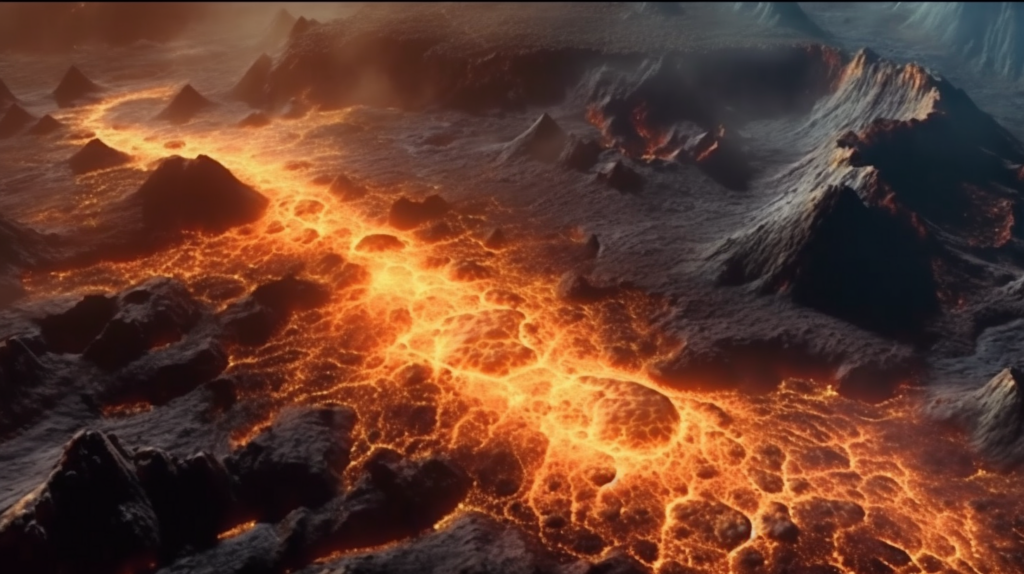
From towering giants like Maat Mons to smaller formations, Venus’s surface is dotted with numerous volcanoes. Some of the most notable ones include Sapas Mons, Ozza Mons, and Sif Mons. Each of these volcanoes has its own unique characteristics and history, contributing to the diverse volcanic landscape of Venus.
| Volcano Name | Description |
|---|---|
| Maat Mons | The highest volcano on Venus, with recent radar images suggesting potential current activity. |
| Sapas Mons | A notable volcano, part of the diverse volcanic landscape of Venus. |
| Ozza Mons | Another significant volcano, contributing to Venus’s volcanic topography. |
| Sif Mons | Located on Western Eistla Regio, it’s one of the prominent volcanoes on Venus. |
| Gula Mons | Situated on Western Eistla Regio, adding to the list of Venus’s volcanic wonders. |
| Rhea Mons | Located on Beta Regio, it’s a testament to Venus’s volcanic might. |
| Theia Mons | Another volcano on Beta Regio, showcasing the planet’s volcanic diversity. |
| Eve | Found on Alpha Regio, it’s a part of the vast volcanic structures on Venus. |
| Sacajawea | Located on Ishtar Terra, it’s among the many volcanoes that dot Venus’s surface. |
| Colette | Another volcano on Ishtar Terra, adding to the planet’s volcanic richness. |
Wrapping Up: Insights & References
So, the extraordinary volcanic activity on Venus adds another layer of intrigue to this enigmatic planet. The sheer number of volcanoes discovered through radar mapping is a testament to the magnitude of activity happening beneath its surface. By delving deeper into the study of these volcanoes, scientists can unravel the mysteries surrounding Venus’s geological history and shed light on its potential for habitability. As we continue to explore and learn more about our neighboring planets, let us not forget to marvel at the beauty and complexity that lies within Venus, reminding us of the vast wonders that await us in our own cosmic backyard.
FAQs :
- How many volcanoes are there on Venus?
- While the exact number is unknown, there are thousands of volcanic structures on Venus, ranging from vast shield volcanoes to smaller lava domes.
- Is there any active volcano on Venus?
- While direct observations of eruptions are challenging, evidence suggests that some volcanoes on Venus might still be active.
- Has there been any recent research on volcanic activity on Venus?
- Yes, NASA‘s Magellan data from 2023 revealed significant changes in a volcanic vent on Venus, suggesting active volcanism.
- What are the main volcanic features on Venus?
- Venus showcases a variety of volcanic features including flood lavas, edifice clusters, shield volcanoes, volcanic cones, and volcanic domes. Over 1,660 volcanic landforms have been identified on its surface.

